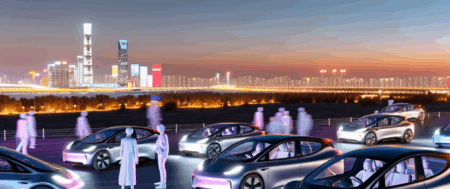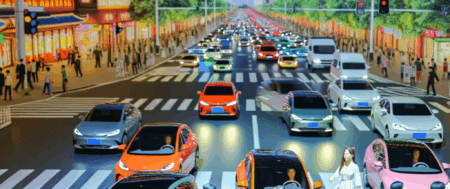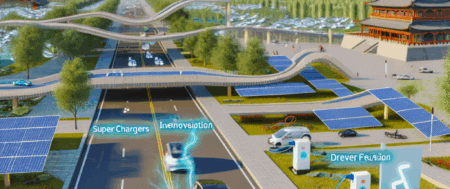China has risen as the top and largest automotive market globally, powered by its growing economy, urbanization, and an expanding middle class with more buying power. This surge is boosting both domestic car brands and foreign automakers, with a significant shift towards Electric Vehicles (EVs) and New Energy Vehicles (NEVs) due to environmental concerns and government incentives. The country is leading the green automotive revolution, thanks to technological advancements and a focus on eco-friendly consumer preferences. However, the regulatory landscape poses challenges, requiring foreign players to form strategic partnerships and joint ventures to thrive. With increasing market competition, understanding China’s automotive sector’s unique dynamics, from government policies to consumer trends, is crucial for success.
As the dawn breaks on a new era of mobility, the spotlight turns to the East, where the China automotive market reigns as the largest and most dynamic in the world. With its growing economy, rapid urbanization, and an expanding middle class hungry for innovation and luxury, China has cemented its position as the epicenter of automotive evolution. The country’s insatiable demand for vehicles is matched by a keen interest in Electric Vehicles (EVs) and New Energy Vehicles (NEVs), propelled forward by government incentives and mounting environmental concerns. In this intricate dance of market forces, both domestic car brands and foreign automakers vie for the attention of Chinese consumers, navigating a complex regulatory landscape through joint ventures and strategic partnerships.
At the heart of this competitive arena, technological advancements, consumer preferences, and global economic trends play a pivotal role in shaping the future of transportation. Understanding the nuances of China’s automotive sector requires a deep dive into the policies fueling the rise of EVs and NEVs, the preferences swaying towards either domestic or foreign brands, and the joint ventures serving as a gateway for foreign automakers. Moreover, the regulatory landscape presents both challenges and opportunities, demanding a strategic approach to harness the full potential of the world’s largest automotive market.
This article aims to explore the multifaceted nature of China’s automotive industry, from the surging popularity of electric vehicles driven by government incentives to the critical role of joint ventures and strategic partnerships in overcoming market competition and regulatory hurdles. We will delve into consumer behavior within the rapidly urbanizing nation, examine the impact of technological advancements and environmental concerns on industry trends, and assess the influence of global economic shifts on market dynamics. Join us as we navigate the economic boom, urban growth, and the path forward for stakeholders in the world’s leading automotive market.
1. **Introduction to the World’s Largest Automotive Market: Navigating China’s Economic Boom and Urban Growth**

In recent years, China has firmly established itself at the top of the global automotive industry, becoming the Largest Automotive Market in the world. This remarkable achievement is largely attributed to the nation’s rapidly Growing Economy, significant Urbanization, and the expansion of a middle class with increasing purchasing power. These factors combined have created an unprecedented demand for both Domestic Car Brands and Foreign Automakers, setting the stage for a highly competitive and dynamic market environment.
A key aspect of China’s automotive sector is its strong emphasis on Electric Vehicles (EVs) and New Energy Vehicles (NEVs). This focus is driven by pressing Environmental Concerns and the Chinese government’s dedication to combating pollution and reducing the country’s carbon footprint. As a result, Government Incentives for the production and purchase of EVs and NEVs have been substantial, encouraging both consumers and manufacturers to lean towards more sustainable vehicular options. These policies have not only positioned China as a leader in the green automotive revolution but have also spurred considerable Technological Advancements within the industry.
The Regulatory Landscape in China is complex, with strict rules and regulations that foreign companies must navigate to access the vast Chinese market. To overcome these challenges, many Foreign Automakers have formed Strategic Partnerships through Joint Ventures with local Chinese companies. These collaborations are essential for foreign brands to gain insight into Consumer Preferences, adapt to the unique market demands, and comply with local regulations. These joint ventures have become a cornerstone of success for international brands, allowing them to tap into China’s massive consumer base while contributing to the technological and innovative advancements in the Chinese automotive market.
Consumer Preferences in China are evolving, with an increasing number of Chinese consumers showing a preference for technologically advanced, environmentally friendly vehicles. This shift is partly due to the growing awareness of environmental issues and the attractive incentives offered by the government for choosing greener alternatives. Additionally, the technological prowess of Domestic Car Brands has seen significant improvement, challenging their foreign counterparts and heating up Market Competition.
Understanding the Chinese automotive market requires a deep dive into the nuances of its Regulatory Landscape, Consumer Preferences, and the strategic maneuvers through Joint Ventures and Strategic Partnerships. For businesses looking to penetrate or expand their footprint in this lucrative market, staying abreast of Technological Advancements, government policies, and shifting consumer behaviors is crucial. The Chinese automotive market, with its blend of challenges and opportunities, remains a pivotal arena for both domestic and foreign players aiming to make their mark in the era of electric and new energy vehicles.
In conclusion, China’s position as the world’s largest automotive market is a reflection of its rapid economic growth, expanding urbanization, and the increasing purchasing power of its burgeoning middle class. This dynamic market, characterized by a strong demand for both domestic car brands and foreign automakers, continues to evolve with consumer preferences leaning towards Electric Vehicles (EVs) and New Energy Vehicles (NEVs). These preferences are bolstered by significant government incentives aimed at addressing environmental concerns and promoting sustainable transportation solutions.
Foreign automakers looking to tap into this lucrative market have found success through forming joint ventures with local Chinese companies, a strategic partnership that helps navigate the complex regulatory landscape. This collaboration is vital for accessing China’s vast consumer base and leveraging local market insights. The competition within the Chinese automotive sector remains fierce, driven by technological advancements, government policies, and global economic trends.
To thrive in the largest automotive market, companies must understand the intricacies of the regulatory environment, align with consumer preferences, and remain at the forefront of technological innovation. The future success in China’s automotive industry will undoubtedly hinge on the ability to adapt to the fast-paced changes, from shifting market trends to evolving government incentives. As China continues to lead in the automotive sector, the focus on Electric Vehicles and New Energy Vehicles will play a pivotal role in shaping the global automotive landscape, reinforcing the importance of strategic partnerships and deep market knowledge in conquering this competitive yet rewarding market.






